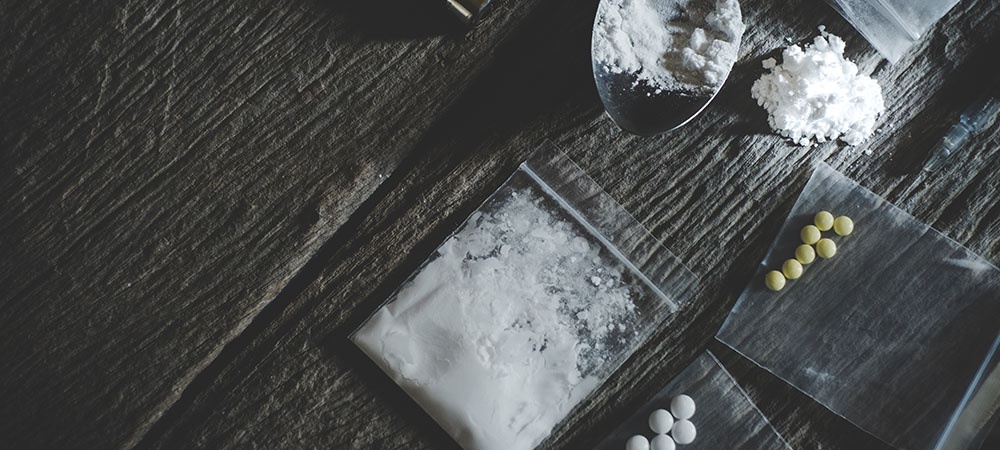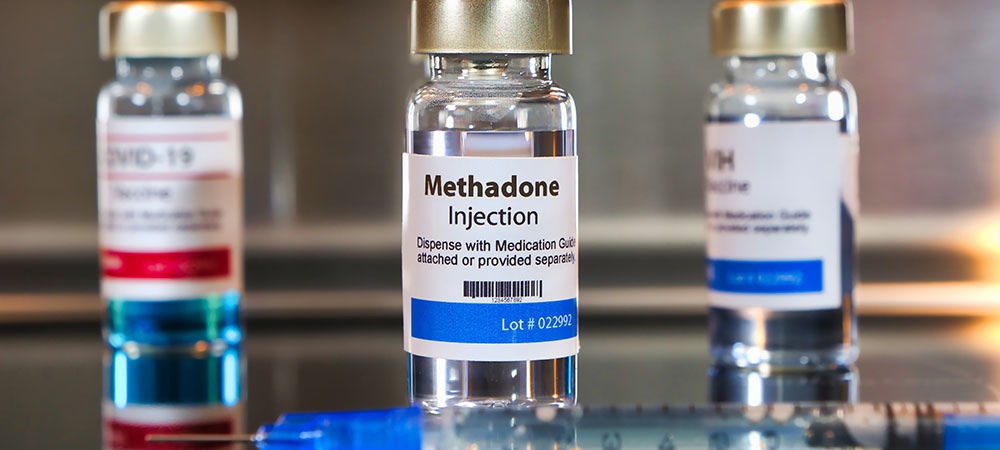Recognizing your addiction is critical to your recovery. Also, choosing to embark on recovery requires bravery. Additionally, it would help if you undergo medically supervised detox to gain the total dividends of recovery,
Detoxification can lead to a variety of side effects known as withdrawal symptoms. And these side effects manifest when you cease or significantly reduce your drug usage.
There’s a wide range of withdrawal symptoms that addiction patients may encounter while they go through detox. In addition, depending on the drug or level of substance usage, the intoxication or aftermath may differ. Nevertheless, the withdrawal symptoms of detox can be lethal, especially if you undertake the procedure on your own.
We closely understand your concern regarding your addiction level. And we commend your decision to seek help. Likewise, your desire to undergo medically supervised detox is laudable.
To further help your recovery process, this comprehensive article will not only define what medically supervised detox is. It’ll also detail the procedures and potential side effects of drug detoxification. Additionally, we’ll touch on related treatment and medications.
Let’s go!
What is Medically Supervised Detox?
As you may already know, detoxification refers to purging the body of toxins. On the other hand, medical detoxification comprises removing dangerous drugs from the body.
Importantly, it’s best to leave the latter kind of cleansing to trained medical personnel. So, therefore, medically supervised detox is one that’s done under the supervision of a physician or a group of medical personnel.
When it comes to medical detoxification, it’s common to assemble a team of specialists from several fields. Doctors, nurses, and other medical professionals may also be part of a detox team. Detoxing addicts requires a high level of competence to ensure adequate treatment.
Emergency rooms in hospitals and medical detox facilities have a lot in common. For example, emergency rooms in hospitals can control diabetic attacks and other long-term health issues. Likewise, medical detoxification stabilizes the patient’s system to prevent seizures.
One thing to keep in mind is that medical detoxification doesn’t serve as a means of recovery from addiction. Instead, it’s a critical stage in the treatment of drug addiction. In addition, preparing your body for further treatment is facilitated by this process.
Medically supervised detoxification should be the initial step for those seeking addiction therapy. Your success in treatment and recovery increases when you complete a medical detox program in Ontario.
During the drug detox program, you’ll engage in several different activities. And these actions, in turn, trigger withdrawal symptoms. First, let’s take a look at what medically supervised detox entails.

Procedure for Medically Supervised Detox
Being aware of what happens during a medically supervised detox is essential. As a result of this information, your mental preparation will be top-notch for any detox-related tasks.
All drug treatment facilities follow three primary procedures for medical detox. However, the administration of these procedures may vary from patient to patient.
Some people can have both treatments at once. Meanwhile, some individuals may need the treatments at a later date.
The first step in rehabilitation is to identify the patient’s unique circumstances. As a result of this, the patient’s condition can be supported. After that, you’ll need long-term therapy for your addiction.
Continue reading if you’d like a more in-depth description of how medically supervised detox feels.
In-depth Evaluation
Detox centers begin with evaluating the patient’s physical, psychological, and social background as soon as they arrive. A patient gets tested for drugs at this point in the evaluation process. Afterwards, the patient’s test results determine their suitable therapy.
The duration of a patient’s detox may be predicted using the information gotten at this stage. Different elements have an impact on the resulting timeline. The following are a few of these elements:
- How eager you are to be well again
- Support from inside the family and from friends
- The substance the patient is trying to get rid of
- Body’s ability to absorb and use the chemical
- Mental disease is a possibility.
- Relatively high risk of severe detoxification withdrawals
- Term of usage
- How you utilize it (smoking, injection, or snorting)
- Addiction has a genetic component.
- The history of previous slips
During detox, there is a considerable risk of having deadly effects. As a result, medical detox requires the assistance of trained specialists. Experts in health care know what to do to ease detox symptoms and know the correct medicine to administer.
Is it safe to go through a drug detox? Yes, that’s the simplest response.
But the hazards of detox withdrawal point to the benefits of medically assisted detox. So it would help if you didn’t detox on your own.

Stabilization
Treatment of addiction intoxication and detox withdrawal is part of the stabilization process. Addiction patients get the care they need and maybe drug administration. These drugs help alleviate withdrawal symptoms.
In addition, the doctors and nurses taking care of you offer you an idea of what to expect throughout your drug detox. As a result, you’ll be able to better prepare your body system for recuperation by gaining new insights.
Your medical team also establishes the ideal detox environment for you during the process of stabilizing you for subsequent treatment. The place where you will get therapy and medicines is known as your detox setting.
Your final evaluations will determine the degree of care you require. Your treatment team will next use this information to establish your treatment location. They may consider the following settings for you.

Inpatient Detoxification Under Medical Supervision
Inpatient detoxification in a medically supervised setting is a pleasant experience. And it’s best for patients currently intoxicated and in danger of deadly withdrawal.
Various services and amenities are available to patients in a medically-supervised inpatient detox environment. Your health is constantly monitored, and you have immediate access to life-saving services in the facility. This therapy is the most intensive detox therapy available in a hospital setting.
Among the objectives of an inpatient medical detox are the following:
Stabilization Using Medication and Fluids: This objective explains managing withdrawal symptoms with medication and fluids.
Psychiatric Care: The treatment of several mental diseases that may be present simultaneously.
Prevention of Relapse: Helping patients connect with addiction counsellors who can help them avoid relapse.
Clinically Supervised Residential Detox
It’s common practice to administer clinically supervised residential detoxification in residential facilities. Patients are under the care of medical professionals at these institutions. Here, patients can use a wide range of medical detox treatments, including counselling, life support, and medication administration.
The use of medicine in this therapy environment will help alleviate withdrawal symptoms. But it’s not recommended for really unwell individuals and in danger of death during detoxification. In these cases, inpatient detoxification is the best course of action.
The most crucial benefit of a clinically-monitored residential detox program is the reduction of withdrawal symptoms via emotional and medical care.

Intensive Outpatient (IOP)/Partial Hospitalization (PHP) Detox Programs
There are two distinct but related types of care: Partial hospitalization and Intensive outpatient detox. Outpatient detoxification treatments are comprehensive parts of these care services. Patients who do not require 24-hour monitoring should get therapy in this environment.
Both treatments rely heavily on medication management and counselling. These options allow you to remain at home while regularly receiving treatment at an outpatient clinic. Depending on your needs, the amount of time you spend at the facility each day and week will vary.
If doctors propose this treatment environment, your withdrawal symptoms are likely to be mild. However, your situation can need an increase in the degree of attention you receive. You may experience this transfer if your symptoms are long-lasting.
Nurses, physicians, psychologists, clinical staff, and addiction counsellors are all on staff at both levels of treatment. They work together to monitor, observe, and care for patients throughout the day.
In terms of intensity, partial hospitalization is the highest degree of treatment among the two levels of care stated in this section. An average of nine hours of weekly treatment time is required for intensive outpatient therapy. In addition, while you’re in partial hospitalization, you’ll spend around 20 hours each week detoxing from drugs.
Preparation for Further Treatment
Continued subdued therapy following recovery treatment may be beneficial. Professionals strongly advise it, even if it isn’t required, because it helps avoid a recurrence.
You may have significantly benefited from the primary medical detox phase. However, more therapy will help you maintain your newfound commitment to abstaining from drugs. Counselling and behavioural therapy are common additions to standard medical care.
Cognitive-Behavioral and Psychotherapy
When a patient has completed the drug detox and treatment processes, the intensity of your therapy sessions will decrease. However, this doesn’t mean that it has come to an end. On the contrary, the therapy process continues until the withdrawal symptoms are minimal and the risk of recurrence is virtually nonexistent.
The types of therapy you receive during and after drug detox treatment includes behavioural and counselling therapies.
- Behavioural Therapy: A patient’s ability to notice and avoid substance-related imprints can be helped by behavioural treatment.
- Counselling Therapy: The purpose of counselling treatment is to assist patients in overcoming their addictions. Life skills and other therapeutic approaches are fostered here too.
Sub-therapies such as the following fall under the above broad categories of therapy:
- Multidimensional Family Therapy: The role of the family in helping a young person with a drug abuse problem is influenced by multidimensional family therapy.
- Motivational Interview: Behavioral therapy also includes a technique known as motivational interviewing. For example, drug abstinence is encouraged via motivating prizes here. When making cognitive modifications, the patient’s desire for change is vital.
Related Article: Mental vs Physical Withdrawal From Drugs

Withdrawal Symptoms to Expect During Detox
It has already been said that each patient’s experience with medical detox is unique. In addition, no matter how many times a patient has gone through detox, each experience is always unique. Because of this, detox withdrawal symptoms can be somewhat variable.
Additionally, there are two distinct types of withdrawal symptoms to notice. The symptoms include both physical and emotional ones.
Emotional signs of withdrawal include:
- Anxiety
- Confusion
- Insomnia
- Agitation
- Depression
- Irritability
- Mood shifts
- A strong desire for a drug
- Paranoia
- A lack of concentration
Symptoms of physical withdrawal include:
- Diarrhea.
- Pressure
- Headaches
- Unpleasant, vivid dreams
- Pain in the muscles and bones
- Heart rate rises
- An itchy, watery nose
- Shaking and shivering in the cold
- Sweating
- Exhaustion
- Soaring temperatures and chilly winds
- Vomiting and Cramps in the abdomen
- A rise in blood flow
In addition, there are several severe detox withdrawal symptoms:
- Hallucinations
- Delirium
- Seizures

Medication Used for Detox Treatment
The primary goal of medically supervised detox is to alleviate withdrawal symptoms. But a person can take certain drugs while in a treatment program. Depending on the substance in abuse, these medicines will differ.
First and foremost, drug detox programs should be long-term. This view is supported by the fact that long-term therapy decreases the likelihood of relapse and the desire to use drugs.
Medication has a critical function in the healing process. However, this information doesn’t purport to portray drugs as the exclusive means of combating addiction. Instead, you should use medicine in conjunction with other treatment methods, such as psychotherapy.
Specific medicines are needed to treat drug addiction. Drugs in this category include:
Naltrexone, Methadone, and Buprenorphine
Naltrexone, Methadone, and Buprenorphine have all effectively treated drug addiction. A comprehensive Cochrane analysis compares buprenorphine, methadone, and a placebo to back up this assertion. The data showed no change in the number of people reporting using heroin or taking opioid-positive tests. In the meantime, the study’s methadone and buprenorphine treatment dosages were on the medium-high side.
According to research, extended-release naltrexone injection (XR-NTX) is most effective when used once every two weeks. According to the most recent study, it’s a successful method for treating drug addiction. However, Naltrexone’s official usage as a drug addiction medicine is now up for question.
Related Article: What are the Four Stages of Drug Detox?

Summary
Medically supervised detox is a requirement for the treatment of substance use disorders. The drug also influences treatment direction in use and its consumption trend.
Medical detox is the initial step in the treatment of addiction. And while it may come with physical and mental signs of withdrawal, medical supervision, as described above, can help.
Here at Medical Detox Ontario, we offer medically supervised detox programs, including therapy for withdrawal and management. Our experts will examine your detox needs and design a treatment plan to suit your specific situation.
To find out more, contact 1 (888) 899-9458 now.

